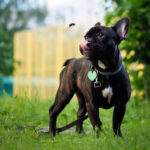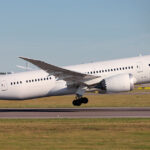Have you ever noticed tiny, fuzzy insects fluttering around your drains or sinks, even in the cleanest of spaces? These unwelcome guests are likely drain flies, small pests that thrive in the damp environments of our drains and pipes. Scientifically known as Psychodidae, drain flies are a common nuisance in homes and commercial buildings alike. Understanding what drain flies are, what attracts them, and how to identify them is the first step in effectively managing these pests.
Identifying Drain Flies: What to Look For
Recognizing drain flies is usually quite straightforward. Here’s what you should observe to confirm you’re dealing with these insects:
What Do Drain Flies Look Like?
Drain flies are diminutive insects, typically measuring about 1/8 of an inch in length. Their bodies are covered in fine hairs, giving them a fuzzy or moth-like appearance, which is why they are also often referred to as “moth flies”. Color-wise, they range from brownish-gray to black. A key identifying feature is their leaf-shaped, hairy wings, which they hold roof-like over their bodies when at rest. You’ll often spot drain flies resting on walls and ceilings near drains, rather than actively flying. When disturbed, they tend to fly in short, erratic hops rather than sustained flight.
Drain Fly Diet and Habitat
Drain flies are attracted to areas rich in decaying organic matter. The larval stage of drain flies is where the real action happens in terms of their diet. Drain fly larvae primarily feed on the organic film, or biofilm, that accumulates in drains, sewer pipes, and even septic tanks. This slime is a mixture of bacteria, fungi, and decaying organic materials – the perfect food source for drain fly larvae. Adult drain flies have a less demanding diet, feeding on polluted water and flower nectar. This explains why they are commonly found in areas with drains, sewage systems, and anywhere stagnant water and organic build-up are present, such as bathrooms, kitchens, and basements.
Types of Insects Considered “Drain Flies”
While the term “drain fly” is most commonly used to describe the moth fly (Psychodidae), it can technically encompass other small flies that breed and feed in similar environments. It’s helpful to be aware of these related insects:
- Moth Flies (Psychodidae): These are the quintessential “drain flies,” characterized by their fuzzy appearance and moth-like wings, as described above. They are most strongly associated with drains and are the primary focus when people talk about drain fly infestations.
- Fruit Flies (Drosophilidae): While often associated with overripe fruit, fruit flies can also breed in drains if there’s enough fermenting organic material. They are smaller than moth flies, typically have red eyes, and are attracted to sugary substances.
- Phorid Flies (Phoridae): These are sometimes referred to as drain flies because they too can breed in drains and decaying matter. Phorid flies are often identified by their erratic, darting flight pattern and a humped back appearance. They are also attracted to decaying organic materials and can be found in similar environments as moth flies.
Understanding what drain flies are, how to identify them, and the types of environments they favor is crucial for effectively addressing any infestations and preventing their return. By recognizing these pests and their habits, you can take targeted steps to eliminate their breeding grounds and keep your home or business free from these nuisance flies.

